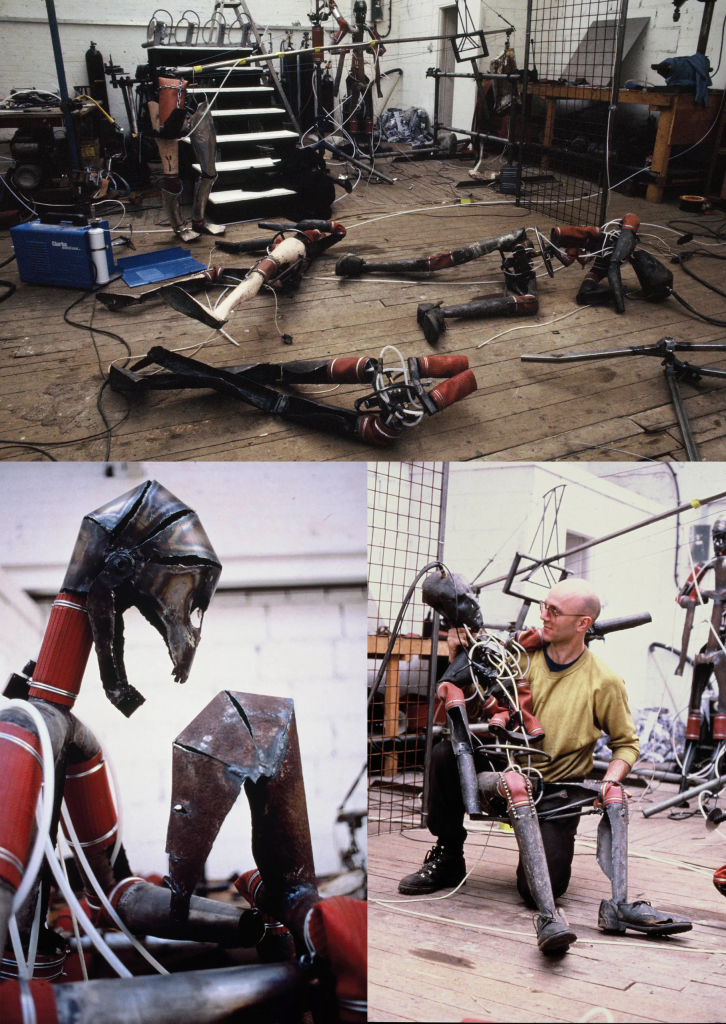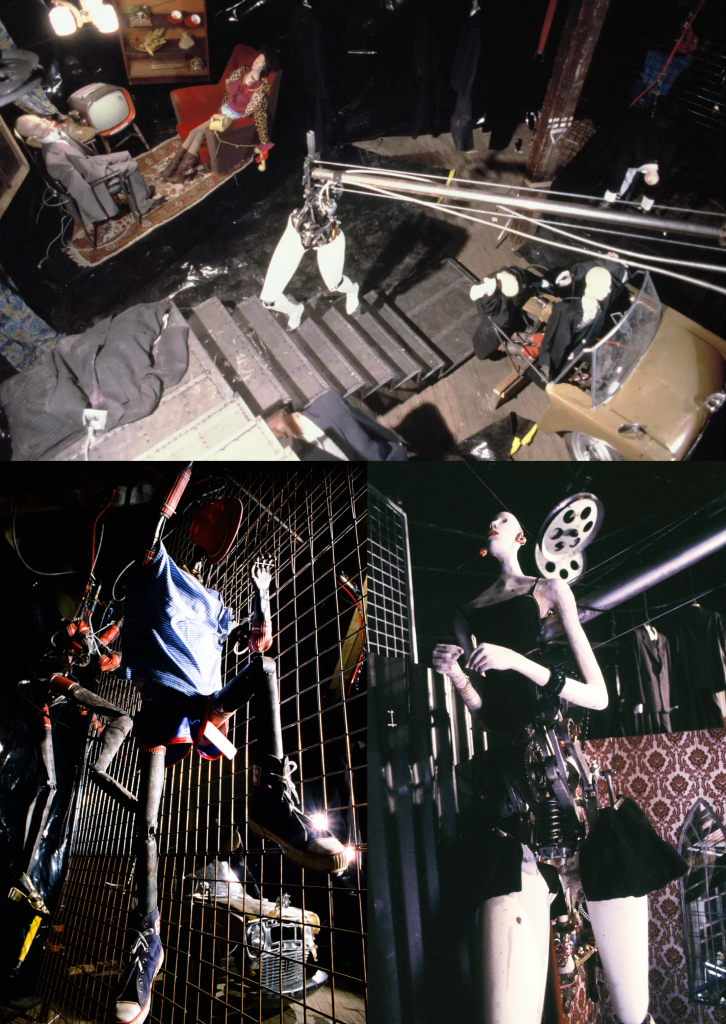
Jim Whiting”s preparatory sketches for Mechanical Theater exhibited at Luna Luna in Hamburg (1987)
Jim’s Maschinentheater installation from the original 1987 Luna Luna art amusement Park curated by André Heller is not featured in it’s recent relaunch as Luna Luna: Forgotten Fantasy in Los Angeles, although some of the figures that featured are displayed statically. However, they do provide the following artist profile on their site with some photographs of the original exhibit, as well as preparatory sketches here:
Artist: Jim Whiting
Attraction: Mechanical Theater
Born: 1951, France
Whiting created animatronic props for Herbie Hancock’s 1984 music video Rockit, awarded five MTV Video Music Awards, including Best Art Direction and Most Experimental Video that year.
For twenty-five years, he ran the nightclub Bimbo Town in Basel, Switzerland and Leipzig, Germany—a space for animatronic installations and experimental performance.
His mechanical sculptures are in the lineage of kinetic art pioneer Jean Tinguely.
Swiss-British artist Jim Whiting creates monumental installations in which animatronic figures and robots dance, spin, and gyrate. Like Swiss artist Jean Tinguely, Whiting is fascinated by the possibilities of mechanical structures that autonomously set themselves in motion. His pneumatic human-machine installations are largely inspired by his experience with a medical condition that forced him to wear a black leather-and-steel leg brace that ignited recurring dreams about mechanical torture.
In Whiting’s installations, or “mechanical theaters,” animatronic characters such as dancing trousers or mannequins in high heels recreate daily social situations with humor and irony. The otherworldly creations reached widespread acclaim after they appeared in the music video for jazz musician Herbie Hancock’s “Rockit” (1984)—a distorted take on middle-class domesticity with jerky robot-like figures spinning, taking baths, and reading the newspaper. From 1992 until 2017, Whiting’s nightclub Bimbo Town, originally housed in a former factory in Basel, Switzerland, featured a constantly evolving collection of Whiting’s animatronic structures in scenes ranging from a hair salon to a church. Originally envisioned as an art installation by Basel gallery owner Klaus Littman, Bimbo Town became an experimental site where mechanized bodies coexisted with live performances and audience participation.
In Whiting’s installations, or “mechanical theaters,” animatronic characters such as dancing trousers or mannequins in high heels recreate daily social situations with humor and irony. The otherworldly creations reached widespread acclaim after they appeared in the music video for jazz musician Herbie Hancock’s “Rockit” (1984)—a distorted take on middle-class domesticity with jerky robot-like figures spinning, taking baths, and reading the newspaper. From 1992 until 2017, Whiting’s nightclub Bimbo Town, originally housed in a former factory in Basel, Switzerland, featured a constantly evolving collection of Whiting’s animatronic structures in scenes ranging from a hair salon to a church. Originally envisioned as an art installation by Basel gallery owner Klaus Littman, Bimbo Town became an experimental site where mechanized bodies coexisted with live performances and audience participation.
For Luna Luna, Whiting created a Mechanical Theater of robots and mannequins made largely out of found objects and discarded junk. Within an enclosed stage, torso-less dancing trousers and human-machine figures—at a bar or suspended above a car crash—formed a nightmarish luna park inspired by social exchanges of everyday life.

Preparation for Luna Luna Exhibition at Jim’s Unit 24 Studio off Upper Clapton Road, London

Figures from Jim Whiting’s ‘Maschinentheater’ (Mechanical Theatre) at the original Luna Luna in Hamburg (1987)